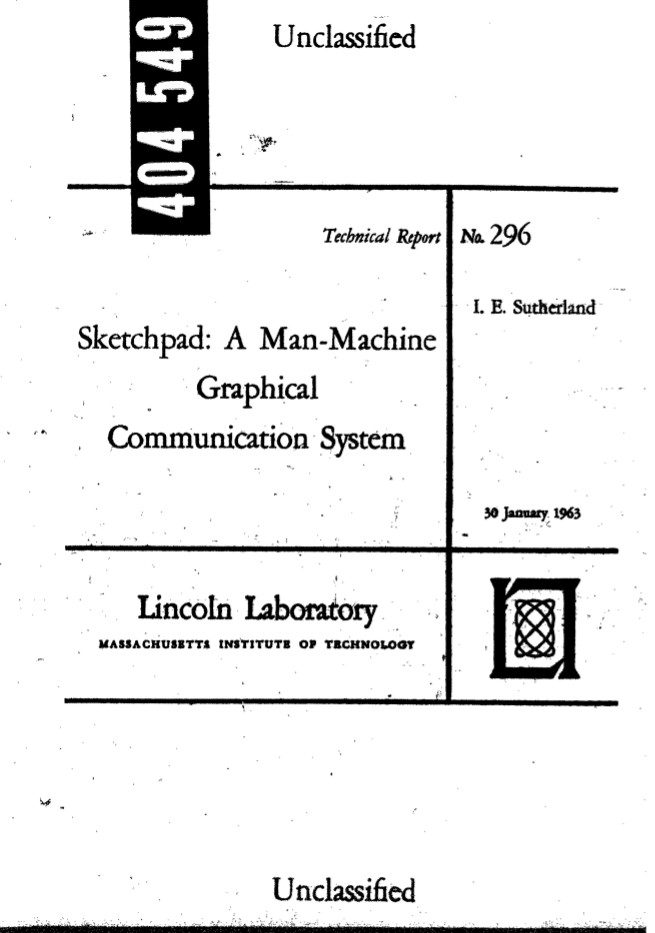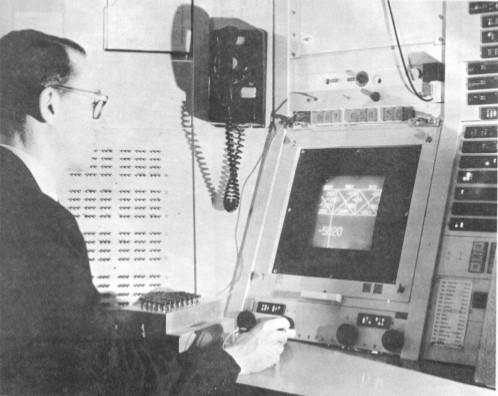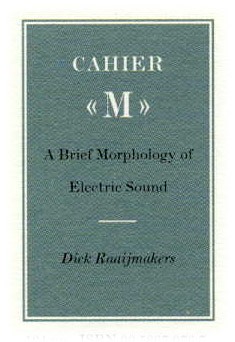Ivan Edward Sutherland: Sketchpad: A Man-Machine Graphical Communication System (1963/2003)
Filed under thesis | Tags: · computing, design, drawing, interface, software, technology


This technical report is based on a dissertation submitted January 1963 by the author for the degree of Doctor of Philosophy to the Massachusetts Institute of Technology.
“The Sketchpad system uses drawing as a novel communication medium for a computer. The system contains input, output, and computation programs which enable it to interpret information drawn directly on a computer display. It has been used to draw electrical, mechanical, scientific, mathematical, and animated drawings; it is a general purpose system. Sketchpad has shown the most usefulness as an aid to the understanding of processes, such as the notion of linkages, which can be described with pictures. Sketchpad also makes it easy to draw highly repetitive or highly accurate drawings and to change drawings previously drawn with it. The many drawings in this thesis were all made with Sketchpad.
A Sketchpad user sketches directly on a computer display with a ‘light pen.’ The light pen is used both to position parts of the drawing on the display and to point to them to change them. A set of push buttons controls the changes to be made such as ‘erase,’ or ‘move.’ Except for legends, no written language is used.
Information sketched can include straight line segments and circle arcs. Arbitrary symbols may be defined from any collection of line segments, circle arcs, and previously defined symbols. A user may define and use as many symbols as he wishes. Any change in the definition of a symbol is at once seen wherever that symbol appears.
Sketchpad stores explicit information about the topology of a drawing. If the user moves one vertex of a polygon, both adjacent sides will be moved. If the user moves a symbol, all lines attached to that symbol will automatically move to stay attached to it. The topological connections of the drawing are automatically indicated by the user as he sketches. Since Sketchpad is able to accept topological information from a human being in a picture language perfectly natural to the human, it can be used as an input program for computation programs which require topological data, e.g., circuit simulators.
Sketchpad itself is able to move parts of the drawing around to meet new conditions which the user may apply to them. The user indicates conditions with the light pen and push buttons. For example, to make two lines parallel, he successively points to the lines with the light pen and presses a button. The conditions themselves are displayed on the drawing so that they may be erased or changed with the light pen language. Any combination of conditions can be defined as a composite condition and applied in one step.
It is easy to add entirely new types of conditions to Sketchpad’s vocabulary. Since the conditions can involve anything computable, Sketchpad can be used for a very wide range of problems. For example, Sketchpad has been used to find the distribution of forces in the members of truss bridges drawn with it.
Sketchpad drawings are stored in the computer in a specially designed ‘ring’ structure. The ring structure features rapid processing of topological information with no searching at all. The basic operations used in Sketchpad for manipulating the ring structure are described.” (from the Abstract)
PhD thesis
Originally submitted at the Massachussets Institute of Technology, January 1963
Technical report published by University of Cambridge, September 2003
New preface by Alan Blackwell and Kerry Rodden
ISSN 1476-2986
149 pages
Sketchpad presentation with comments by Alan Kay (video)
PDF (original thesis, 1963)
PDF (2003 edition)
Dick Raaijmakers: Cahier-M: A Brief Morphology of Electric Sound (2000)
Filed under book | Tags: · acoustics, architecture, electronic music, music, music theory, sound

Cahier-M is about the morphology of electric sound. This inherently single-layered type of sound is discussed in the light of ‘neo-plastic’ music as suggested by the painter Piet Mondriaan in the 1920’s. He advocated a kind of music that consisted of single-layered, ‘single-colour’ electric sounds.
Furthermore, Cahier-M devotes ample attention to the morphological relationship between the typically uniform nature of electric sound and the multi-layered sound structures used by post-WWII serial composers. The discussion of this subject also covers layering (photo)graphic images as practised by the French physiologist E.J. Marey at the end of the 19th century, flipping monadic sound aggregates as practised by Karel Goeyvaerts since 1952, the application of so-called ‘horizontal arpeggios’ by Pierre Boulez around 1980, and the introduction of ‘liquid forms’ in contemporary architecture.
These aspects are illustrated based on a still valid morphological analysis of sound conducted by the author between 1963 and 1967.
Cahier-M comprises four chapters: ‘Invented Sound’, ‘Diagonal Sound’, ‘Composed Sound’ and ‘Spatial Sound’.
Publisher Leuven University Press, 2000
Volume 3 of Collected Writings of the Orpheus Institute
ISBN 9058670767
123 pages
See also Raaijmakers’ Method (1985) and The Destructive Character (1992).
Comment (0)Allan Janik, Stephen Toulmin: Wittgenstein’s Vienna (1973)
Filed under book | Tags: · architecture, art, city, history, language, music, philosophy, vienna, vienna circle

“The central figure in this portrait of a crumbling society giving birth to the modern world without realizing it was Wittgenstein, the brilliant and gifted young thinker whose great book remains the key to modern thought and who went on to influence a whole generation of English thinkers, artists and scientists.
As a portrait of a man, this book is superbly realized. It is even better as a portrait of the age and milieu in which our modern ideas were born–not only in philosophy, but in art, music, literature, architecture, design and style.”
Publisher Simon and Schuster, New York, 1973
A Touchstone Book
ISBN 0671217259, 9780671217259
314 pages
Review: Barry Seldes (H-Net, 1996).
Wittgenstein’s Vienna (English, 1973)
La Viena de Wittgenstein (Spanish, trans. Ignacio Gomez de Liaño, 1998; removed on 2017-10-3 upon request of publishre)

